q10 temperature coefficient
Typhimurium can grow over a range of approximately 40C. Im not sure but your first equation has rate of Tc on the denominator whereas your equations just have Tc.

Temperature Coefficient I E Q10 Of Heart Rate Dashed Line And Download Scientific Diagram
R1 is the measured reaction rate at temperature T1 where T1.

. Choose units and enter the following. Compute R2R1 and write down your answer. Most bacteria including E.
Choose units and enter the following. Calculates parameters from Q10 temperature coefficient for chemical or biological systems. T2 Higher temperature t1 Lower temperature k2 Metabolic rate at t2 k1 Metabolic rate at t1 Q10.
The growth rates of most wild-type strains of E. The Coefficient Q10 calculator computes the unitless measure of the rate of change of a biological or chemical process as a consequence of increasing the systems temperature by 10 C. This yield an R1 at T1 and R2 at T2.
This function can be used in two ways. There are many examples where the Q10 is used one being the calculation of the nerve conduction velocity and another being calculating the contraction velocity of muscle fibres. The Q10 temperature coefficient is the factor by which a rate of reaction such as a chemical reaction increases for each ten-degree increase in the temperature measured in degrees Celsius.
The lab report Use Equation 1 to calculate Q10 using your own data from the lab. Typhimurium can grow over a range of approximately 40C. The Q10 coefficient represents the degree of temperature dependence a muscle exhibits as measured by contraction rates.
He then gives you an example. A COMMON method of comparing rates of reactions or processes in biological systems is the use of the temperature coefficient or Q10 the ratio of the rates of a reaction or process at T10 C. If R_vec and T_vec are given then the best Q10 for those data is returned.
There are many examples where the Q10 is used one being the calculation of the nerve conduction velocity and another being calculating the contraction velocity of muscle fibres. Q10 is a unitless quantity. Thus the Q 10 is expected to depend on the measurement temperature.
If R_vec and T_vec are given then the best Q10 for those data is returned. The usual model for the q10 coefficient is expressed by the following equation. The Q10 temperature coefficient is the factor by which a rate of reaction such as a chemical reaction increases for each ten-degree increase in the temperature measured in degrees Celsius.
1 q 10 k t 2 k t 1 10 t 2 t 1 where t is the temperature in celsius degrees or kelvin and k is the rate constant expressed as exponential decay with temperature commonly expressed by the arrhenius equation k a e e o r t where a eo and. Coli Br is shown in Fig. Q10 temperature coefficient Quick Reference A measure of the effect of a 10 C rise in temperature on the velocity of a chemical reaction.
Temperature coefficient Q10 equation Q10 is the factor by which the reaction rate increases when the temperature is raised by ten degrees. 121M subscribers In this video Paul Andersen defines Q10 as the ratio between reactions at different temperatures. If four of the first five parameters are given Q10 R1 R2 T1 T2 then the fifth parameter is returned or 2.
Parrott teaches you how to solve Q10 equations and how to use them to predict changes in metabolic rate. The Q 10 is expressed as the ratio of the velocity of a chemical reaction at a given temperature to that of the same reaction at a temperature 10 C lower. If four of the first five parameters are given Q10 R1 R2 T1 T2 then the fifth parameter is returned or 2.
For example if the Q 10 of a reaction calculated from rates at 5 C and 15 C is found to be 3 the Q 10 calculated at 27 C and 37 C would be 257 a reduction of 14. It states that chemical reactions at a 10 K increase in temperature take place two to four times as fast. The Coefficient Q10 calculator computes the unitless measure of the rate of change of a biological or chemical process as a consequence of increasing the systems temperature by 10 C.
Write the values of R1 R2 T1 and T2 on a piece of paper. The Q10 equation is then used to estimate the Q10 for the process. This function can be used in two ways.
For example if R1 8 and R2 24 compute 248 3. Description Calculates parameters from Q10 temperature coefficient for chemical or biological systems. If you know the 1st equation is correct then putting in your.
The temperature coefficient Q10 is calculated by measuring the rate of a reaction R at two different temperatures in Celsius degrees or kelvin and where T1. The Q10 value is tied to an increase in the surrounding temperature with an increase in 10 C and usually resulted in a doubling of the reaction rate. Q10 temperature coefficient The RGT rule reaction rate - temperature control and van t Hoff rule is a rule of thumb in chemical kinetics and allows the estimation of many phenomena in chemistry biochemistry and ecology.
The rate of change in resting metabolic rate RMR as a result of a temperature increase of 10 C is termed the temperature coefficient Q10 which is often used to predict how an organisms. A Q10 of 10 indicates thermal independence of a muscle whereas an increasing Q10 value indicates increasing thermal dependence. However this dependence is small for the temperature ranges within which ion channels operate.
The normal temperature range extends from 21 to 37C over which range. The Q10 temperature coefficient is a measure of the rate of change of a biological or chemical system as a consequence of increasing the temperature by 10 C. Report 4 years ago.
Typhimurium respond similarly to changes in temperature the particular response of E. When this happens the Q10 value for the. The Q10 temperature coefficient is a measure of the rate of change of a biological or chemical system as a consequence of increasing the temperature by 10 C.
T2 Higher temperature t1 Lower temperature k2 Metabolic rate at t2 k1 Metabolic rate at t1 Q10 Coefficient Q10. Original post by Yme2day I dont have a mark scheme for this question so was hoping if someone could confirm if i have the right answer or not.

Q 10 The Temperature Coefficient Youtube

Temperature Coefficient Q10 Calculator Physiologyweb

Relationships Between The Q10 Temperature Coefficient For Respiration Download Scientific Diagram

Q10 Temperature Coefficient Wikiwand
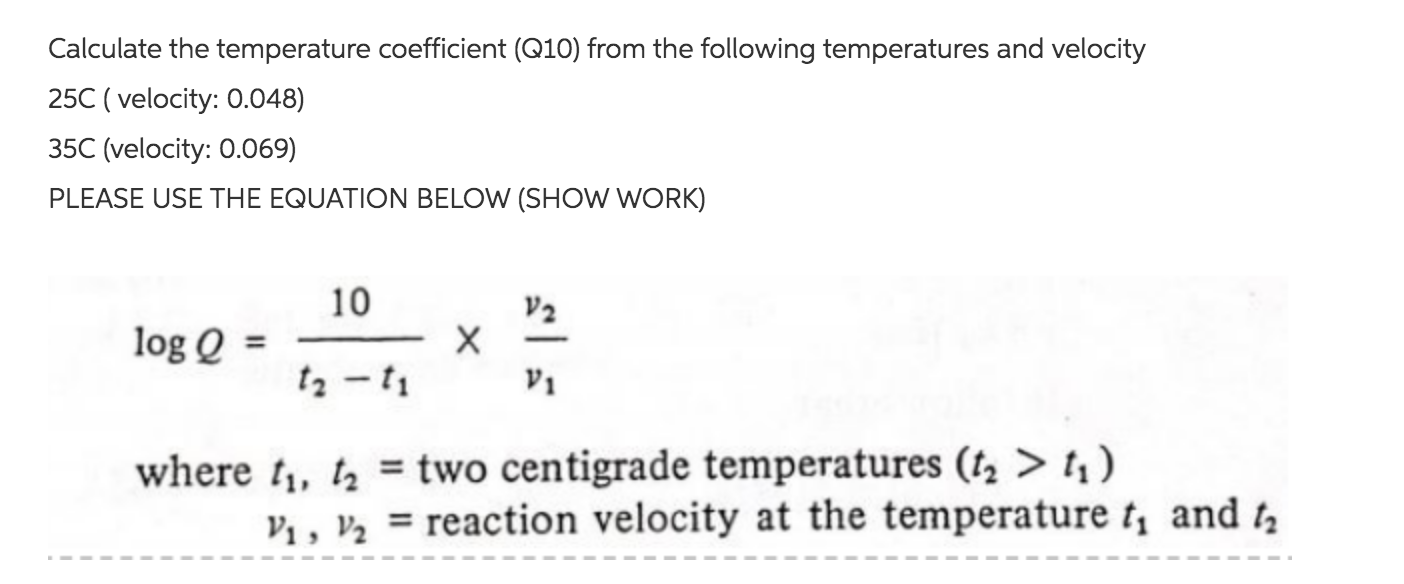
Solved Calculate The Temperature Coefficient Q10 From The Chegg Com
Temperature Coefficient I E Q10 Of Heart Rate Open Circles Dashed Download Scientific Diagram
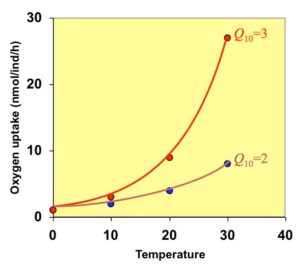
Effect Of Temperature On Oxygen Consumption Larvae Knowledge Incubator

Effect Of Temperature Coefficient Q10 And Acclimation Time On The Download Scientific Diagram

Q10 The Temperature Coefficient Youtube

Do Now Have Your Improvements Back And Change Anything That Needs Changing Think Pair Share What Do You Remember About Enzymes And Temperature From Ppt Download
Values Of The Temperature Coefficient Q10 During Hypothermia Calculated Download Scientific Diagram
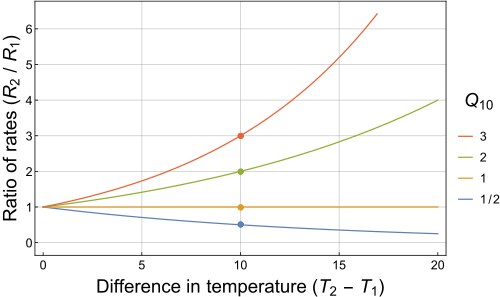
Q10 Temperature Coefficient Wikiwand
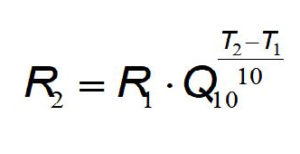
Effect Of Temperature On Oxygen Consumption Larvae Knowledge Incubator

Q10 Temperature Coefficient Ppt Download
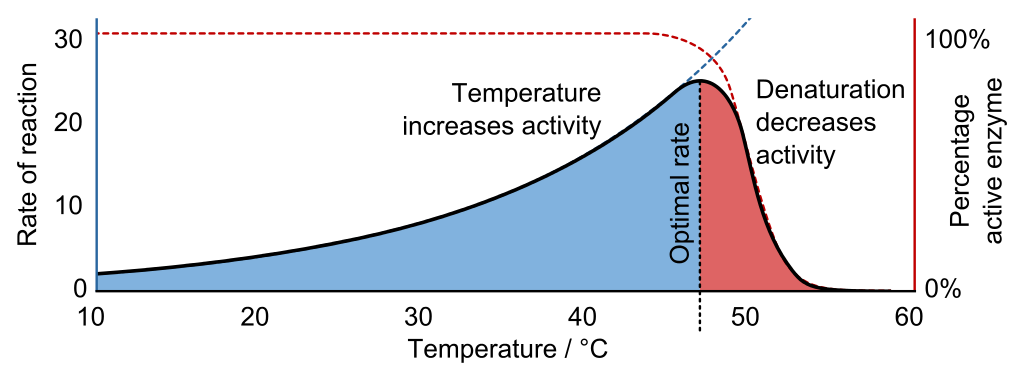
The Value Of Q10 For Photosynthesis Is A 4 B 6 C 7 Class 10 Biology Icse
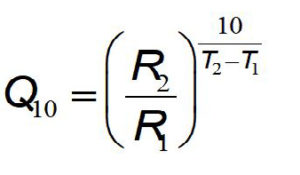
Effect Of Temperature On Oxygen Consumption Larvae Knowledge Incubator
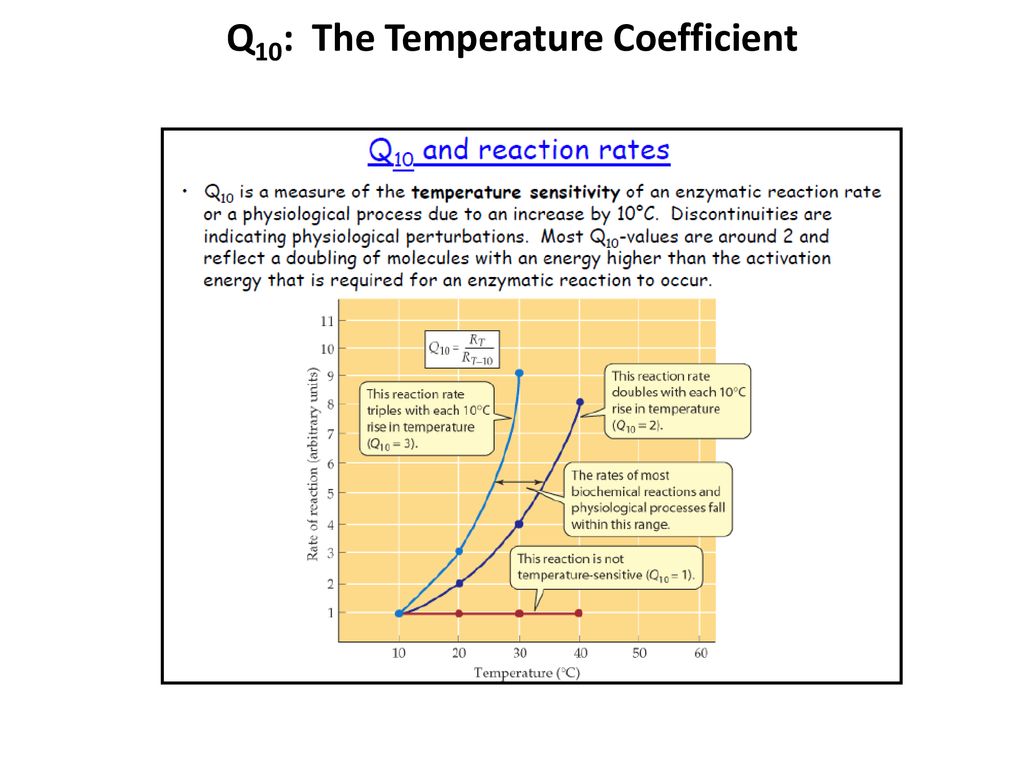
Thermoregulation And Q10 The Temperature Coefficient Ppt Download
Temperature Coefficient Q10 Calculations The Student Room

Mr I Explains How To Calculate The Temperature Coefficient Q10 For A Chemical Reaction Youtube
Comments
Post a Comment